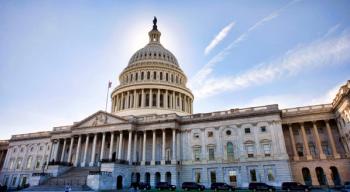
Remaking the market
Health plans have little time to prep their operational strategies for new rules under health reform
It took nearly a year of debate and political wrangling before the Patient Protection and Affordable Care Act (PPACA) was enacted on March 23, 2010. Now the provisions of the 2,000-page bill are being more sharply defined by federal rulemaking procedures, primarily involving the Department of Health and Human Services (HHS), the Department of Labor and the Department of the Treasury.
State governments also have a pivotal role to play as they carry out pieces of the law, such as new Medicaid eligibility, insurance exchanges and premium-rate reviews. The results of the state and federal rulemaking processes affect health plans, which must adjust to the dramatic changes each phase-in of the law will bring to their businesses leading up to implementation.
"In many ways, the law is a remaking of the insurance market," says Cindy Gillespie, a managing director at the law firm of McKenna Long & Aldridge, where she leads the healthcare policy team. "It will have huge ramifications long term."
FUTURE GLIMPSE
The recently finalized medical loss ratio (MLR) regulations are a good example of how insurers are quickly adapting their business strategies to PPACA's provisions as defined by the rulemaking process. PPACA calls for the proportion of premium dollars health insurers spend on patient care to be 80% for small-business plans and 85% for large-company plans.
MLR minimums were prescribed when the law was enacted, however, what was not known was how HHS would qualify patient care spending versus administrative spending. For example, broker commissions are classified as administrative expenses but federal taxes are not.
The law required the National Association of Insurance Commissioners (NAIC) to recommend uniform definitions and methodologies for calculating insurance companies' medical loss ratios. After months of debate on what would be defined as medical spending, and input from consumer and industry representatives, the final MLR guidelines were certified Nov. 22, 2010-less than two months ago. They closely follow suggestions submitted to HHS by NAIC in October, which narrowly defined medical spending and provided exemptions for mini-med policies, state adjustments and some small plans.
Two months is not nearly enough time for insurers to achieve new MLR minimums and create a system to publicly report how they spend premium dollars. Those who do not meet the MLRs in 2011 will make the first round of rebates to consumers in 2012. Many predict insurers will aim for rebates instead of underpricing products.
And those rebates could be significant. If MLR rules were in effect for 2010 plans, up to 9 million Americans would be eligible for up to $1.4 billion in rebates.
"The medical loss ratio component of the law has big implications from an operational and financial perspective," says Anne Hance, a partner in the law firm of McDermott Will & Emery.
She says the NAIC model addressed some unanswered questions in PPACA, but before the final ruling, it was still not clear whether HHS would use the NAIC model or go in another direction. Insurers had to wait and see.
"It was challenging from an implementation perspective," she says.
But like many stakeholders, she views healthcare reform as both a marathon and a sprint.
"The law was enacted March 23, and lot of things went into effect September 23, so we had six months to see what came out of the regulations issued over the spring and summer," she says. "Then further interpretations have also had an impact on how plans have responded to all these different changes. It's really been a sprint to get this first round of short-term market reforms implemented."
She says the sprint vs. marathon analogy will continue to repeat itself as other guidance on PPACA rules is issued.
"MLR was a flurry of activity and then there was a second layer of what the regulations meant and what questions were answered and unanswered," she says. "Then insurers had to determine how their company was going to respond, then how to implement and modify their operations. It's a cycle that will be repeated over and over again."
Newsletter
Get the latest industry news, event updates, and more from Managed healthcare Executive.






















































